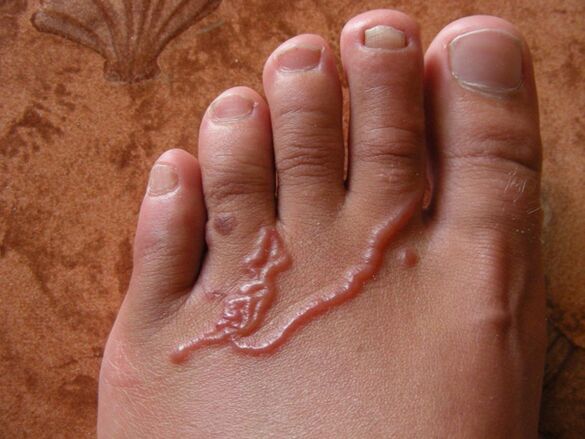
There are a number of protozoa that can only exist in the host's body. For most of them, the main carriers are people. By penetrating the human body, these creatures can live anywhere, but subcutaneous parasites are considered the most common. They are the ones who deliver the most unpleasant moments, including the development of complications, and therefore it is necessary to consult a doctor at the first signs of infection.
Types of parasites that live under the skin
The simplest, basic carrier is a human being, divided into two main groups:
- Leather
- Subcutaneous.
The first includes such insects: lice, fleas, bedbugs. They live in human hair and skin, feed on their blood and can carry various dangerous diseases. However, skin parasites are still considered less dangerous than subcutaneous parasites. The latter, which live in human skin, not only feed on its cells, but also breed their offspring in it. Therefore, it is much more difficult to fight skin parasites in humans than skin parasites.
Many protozoa and helminths live under human skin, and this can lead to the development of various diseases, for example:
- Filariosis
- Drakunkuloz
- Schistosomiasis
- Hookworm
- Cysticercosis
- itching.
And the most unpleasant thing about this is that it is often very difficult to make a correct diagnosis, because the symptoms of such diseases often resemble a normal allergic reaction. As a result, the treatment of dermatoses takes a very long time.
To get an idea of what subcutaneous parasites a person can have and how they manifest themselves, consider the signs of infection with each of the above.
Filariosis
This species does not live in our country, but they are easily infected when traveling to Africa, South America and Asia. Infection occurs when a person is bitten by a blood-sucking insect like a mosquito. As for the incubation period, this type of dermatosis can reach 7 years.
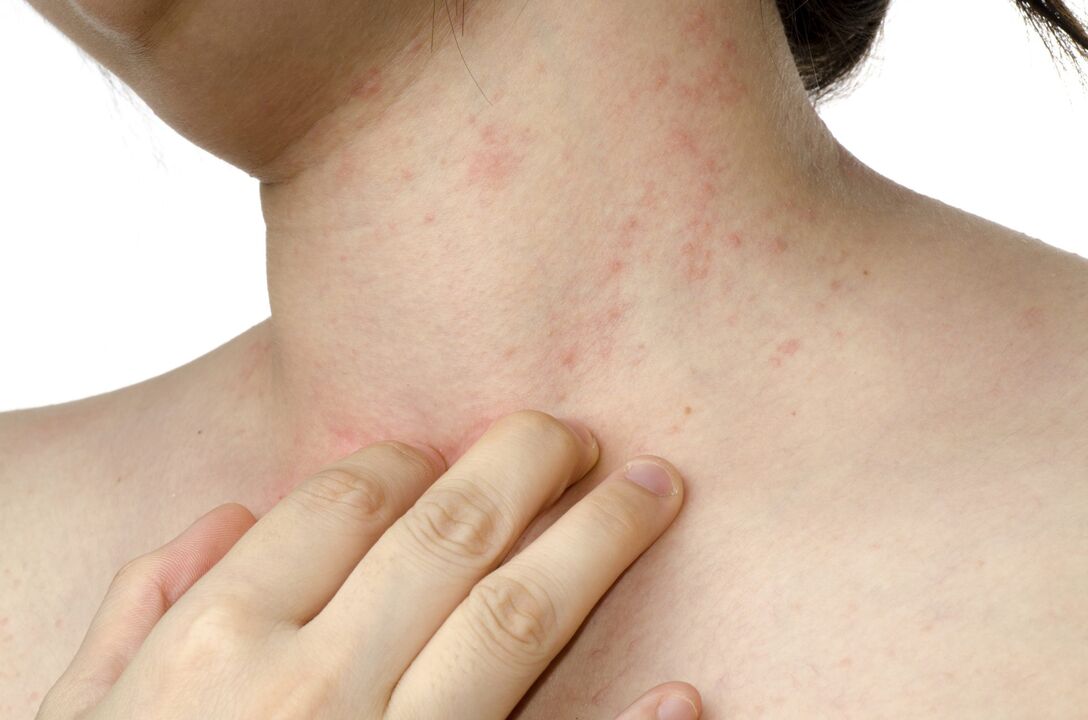
The initial symptoms of this parasitic skin disease are often mild fever and hives, and are often overlooked.
And only after a few years it begins to appear on the skin:
- ulcers
- Warts
- knots
- papules.
Eczema can develop over time. In some cases, they may be accompanied by mild malaise, headaches, and fever, which may lead to the conclusion that the patient has filariasis. The disease is caused by filamentous nematodes.
However, if not treated in time, parasitic skin diseases can lead to complications in the form of osteoarthritis and vision problems.
The use of mosquito repellents will help prevent infection. By treating exposed areas of the skin with it, and thus protecting yourself from the bites of blood-sucking insects, you will protect yourself from filariosis infection.
Drakunkuloz
The disease is caused by round subcutaneous helminths - guinea worms. The adults of these parasites, which live under human skin, can reach a length of more than one meter. A feature of this species is that not only a person can serve as a carrier for them, but also pets: cats, dogs. These parasites are most common in Central Asia.
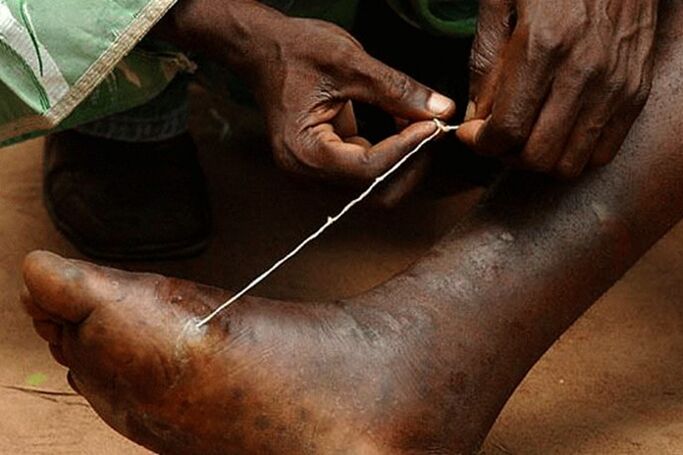
The larvae of guinea worms enter the human body with raw, untreated water. After 2 weeks, they begin to travel with the body of the carrier, and after 1, 5 months they penetrate into the subcutaneous areas. The larva will become an adult only after a year.
It is difficult to confuse the symptoms of ringworm infection with any other disease. At first, an elongated swollen area resembling a small lace appears on the skin in the area of the feet. Then a bubble with helminth eggs forms in its place. When water enters, it explodes, allowing new larvae to enter the environment.
If you do not start treatment on time, the complications will look like this:
- Inflammation of the joints
- Gangrene
- Sepsis due to skin abscess.
As for the fight against this parasite of human skin, it consists in its removal from the skin tissues. In addition, if the patient has a large individual parasite in his body, this process can take several days. The only condition is not to break the worm.
To prevent dracunculitis, you should only drink disinfected water and not swim in open water.
Schistosomiasis
This disease is also caused by helminths. They live in the waters of Asia and Africa, so swimming in these waters puts you at risk of infection. This variety of helminths parasitizes not only on human skin, but also in the genitourinary system. In the early stages of development, the disease manifests itself with rash, itching, dermatitis. In the future, signs of kidney damage may appear and the liver may increase.
The disease is treated with antimony-based drugs. But it is better to avoid infection by following simple rules: avoid bathing in stagnant water and use only boiled water.
Hookworm
These parasites enter the skin through cracks in the soles of the feet or wounds in other parts of the body. However, they often affect the lower limbs and remain there without passing through the body.
Hookworm disease is characterized by the following symptoms:
- severe itching at the site of the parasite;
- changes in the skin;
- appearance of anemia.
The most unpleasant aspect of the infection is that the disease is quite difficult to treat and it is not always possible to get a positive result.
Cysticercosis
The larvae of tapeworms can also parasitize under human skin. The main habitats of these parasites in the human body are the internal organs where they are infested with helminth-infected food or water. However, it is not uncommon for them to develop under the skin and can live there for years.
Symptoms of cysticercosis infection include swelling and neoplasms where the parasite enters. Over time, they thicken. In rare cases, the infection may be accompanied by hives.
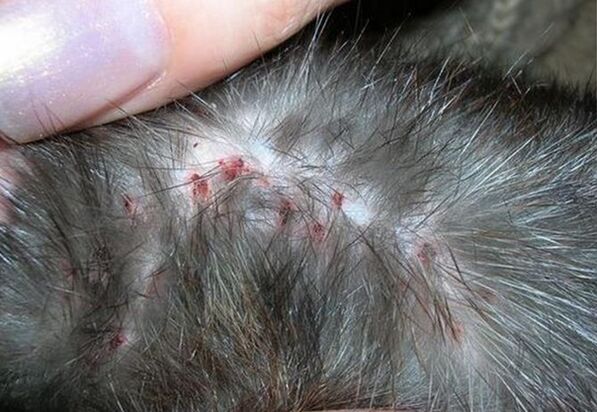
The only way to get rid of them is complex surgery and antiparasitic drugs.
itching
Today, the disease is extremely rare, but it was literally one of the most common parasitic diseases 50 years ago. Its appearance is due to the penetration under the skin of a person with an itchy tick of microscopic size. In addition, it prefers to be located in the deeper layers of the skin, where it feeds on the epithelium and lays eggs there.
The life span of an adult is not more than two months. During this time, however, the female is able to lay more eggs. Ticks often affect the hands, wrinkles, armpits, and soles of the feet. However, it can also be found in the mammary glands and genitals.
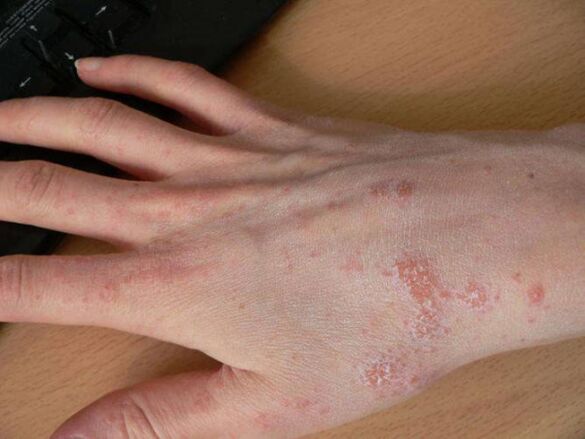
Infection with this parasite leads to the development of pruritus ani, which is characterized by obvious symptoms such as visible transitions, itchy skin, rashes, itching, which intensifies at night. If not treated in time, itching can lead to the development of dermatitis and eczema, which worsen in the autumn.
Such a disease is treated with the use of sulfur ointment or hydrochloric acid solution and sulfur soap. Antibiotics may be prescribed for extensive lesions. However, to prevent re-infection, the patient's linen and clothes should be boiled and ironed on both sides with a hot iron. Therefore, it is easier to follow personal hygiene and avoid contact with infected people - it will help to avoid getting sick.
Identification and diagnosis of subcutaneous parasites
You can often visually determine if a person is infected. However, in any case, the patient will be scheduled for an examination, which will help to more accurately determine the location of the lesion and the number of parasites.
Diagnosed with parasitic skin diseases:
- Scratching and smearing of mucous membranes;
- Blood test for antibodies.
And only after receiving all the results, the doctor can prescribe a treatment regimen and prescribe drugs that can destroy the parasite.
Treatment methods depend on the type of disease. In some cases, even surgery may be required. However, it is often possible to recover with the use of various drugs.
Disease prevention
Parasitic skin diseases are easier to prevent because some types of helminths can be removed from the human body in a few years. To do this, avoid drinking raw water, undercooked meat products and close contact with infected people.




































